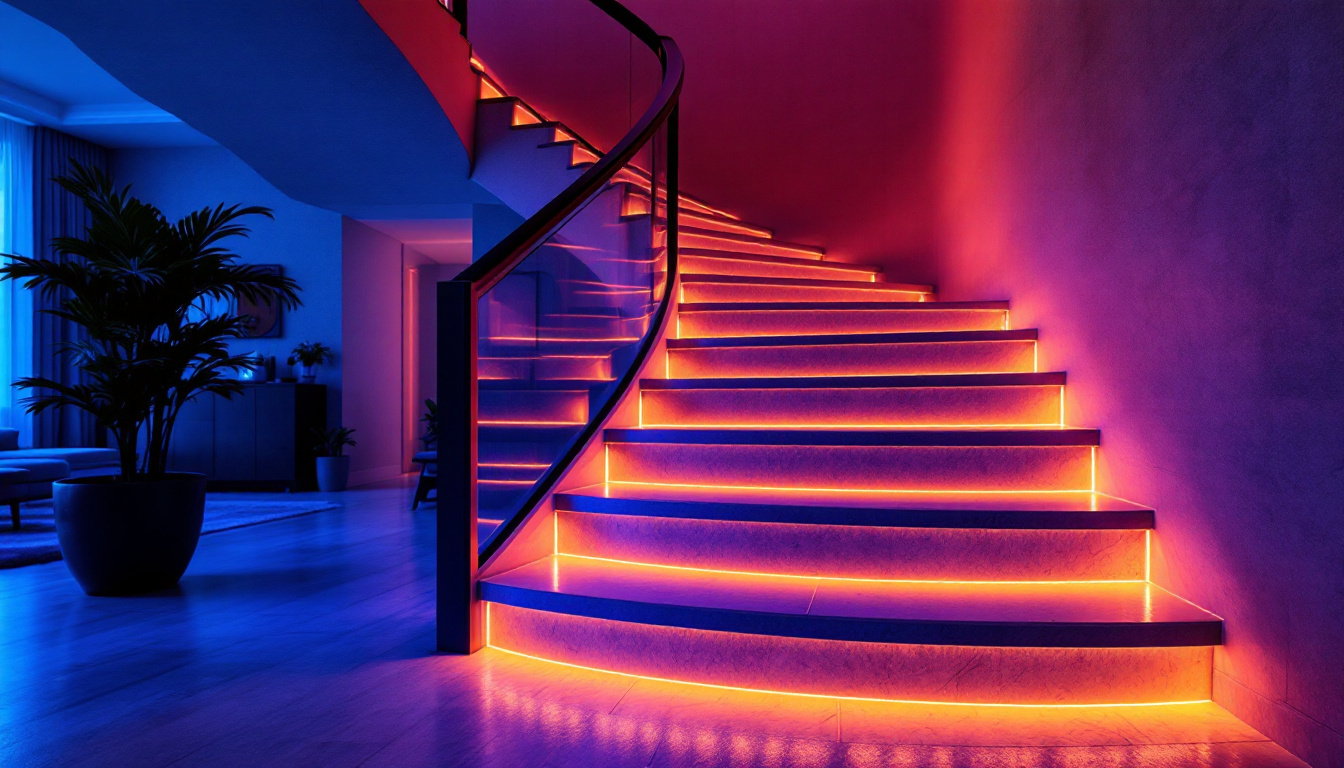
In the realm of residential construction and renovation, outdoor lighting plays a pivotal role in enhancing the aesthetics, safety, and functionality of a home. For lighting contractors, understanding the nuances of outdoor house lighting is essential to delivering exceptional results that meet client expectations. This article delves into various aspects of outdoor house lighting, providing insights, tips, and best practices tailored for lighting contractors.
Outdoor lighting encompasses a broad range of fixtures and applications designed to illuminate exterior spaces. From pathways and gardens to patios and driveways, the right lighting can transform outdoor areas into inviting and safe environments. The thoughtful integration of lighting not only enhances the visual appeal of a property but also plays a crucial role in setting the mood for outdoor gatherings and activities.
Moreover, outdoor lighting can accentuate the natural beauty of landscaping, showcasing the vibrant colors of flowers and foliage at night. By strategically placing lights to highlight trees, shrubs, and architectural elements, homeowners can create a stunning nighttime landscape that draws the eye and invites exploration. The interplay of light and shadow can also add a dramatic flair, making the outdoor space feel more dynamic and engaging.
There are several categories of outdoor lighting, each serving distinct purposes. These include:
The advantages of well-planned outdoor lighting extend beyond mere aesthetics. Key benefits include:
Additionally, outdoor lighting can significantly enhance the overall value of a property. Well-designed lighting schemes can make homes more attractive to potential buyers, providing a sense of luxury and care in the maintenance of the property. Furthermore, energy-efficient lighting options, such as LED fixtures, not only reduce electricity costs but also contribute to a more sustainable environment, appealing to eco-conscious homeowners.
When designing outdoor lighting systems, several factors must be taken into account to ensure a successful installation. Lighting contractors should consider the following elements:
The architectural style of the home significantly influences the choice of lighting fixtures. For instance, modern homes may benefit from sleek, minimalist designs, while traditional homes might call for more ornate fixtures. Understanding the homeowner’s preferences and the existing architecture will guide the selection process. Additionally, the color palette of the exterior materials should be considered; warm-toned lights can complement brick or wood finishes, while cooler tones may enhance contemporary materials like metal or glass. This attention to detail ensures that the lighting not only serves its purpose but also enhances the aesthetic appeal of the property.
Every outdoor space serves a unique purpose, and lighting should reflect that. Contractors should assess how the homeowner intends to use each area. For example, a dining area may require brighter task lighting, while a garden may benefit from subtle accent lighting. Tailoring the lighting design to meet specific needs will enhance the overall experience. Moreover, safety is paramount; well-lit pathways and entryways are essential for preventing accidents and ensuring that guests feel secure. Incorporating motion sensors or dimmers can also add versatility, allowing homeowners to adjust the ambiance based on the time of day or occasion.
With growing awareness of environmental sustainability, energy-efficient lighting options are becoming increasingly popular. LED fixtures are an excellent choice for outdoor lighting, offering long lifespans and lower energy consumption. Contractors should educate clients about the benefits of energy-efficient solutions, which can lead to cost savings over time. Furthermore, integrating solar-powered lights can be an innovative approach, particularly for areas that may not have easy access to electrical outlets. These options not only reduce electricity bills but also promote a greener lifestyle, appealing to environmentally conscious homeowners. By discussing these alternatives, contractors can help clients make informed decisions that align with their values and budget.
Successful outdoor lighting installation requires careful planning and execution. Following best practices can ensure a seamless process and high-quality results.
Before installation begins, creating a detailed lighting plan is crucial. This plan should include the placement of fixtures, wiring routes, and power sources. Consider using software tools or apps that allow for visualizations of the lighting layout. Engaging the homeowner in this phase can also help align expectations.
The selection of outdoor fixtures should be based on durability, style, and functionality. Fixtures must withstand various weather conditions, so choosing materials that resist corrosion and fading is essential. Additionally, the style should complement the home’s architecture and the surrounding landscape.
Proper wiring is critical for outdoor lighting systems. Contractors should ensure that all wiring is rated for outdoor use and buried at the appropriate depth to prevent damage. It’s also important to adhere to local electrical codes and regulations to ensure safety and compliance.
As technology evolves, so do outdoor lighting solutions. Contractors should stay informed about innovative products and techniques that can enhance their offerings.
Smart lighting technology allows homeowners to control their outdoor lighting remotely via smartphones or smart home systems. Features such as dimming, scheduling, and color changing can create dynamic lighting environments. Educating clients about these options can set contractors apart in a competitive market.
Solar-powered fixtures are an eco-friendly alternative that can reduce installation costs and energy consumption. These lights harness sunlight during the day and automatically illuminate at night. While they may not be suitable for all applications, they can be an excellent option for pathways and garden areas.
Integrating lighting with landscaping can create a harmonious outdoor environment. Techniques such as uplighting trees or downlighting from pergolas can enhance the natural beauty of the landscape while providing functional illumination. Collaborating with landscape designers can yield stunning results.
Once the outdoor lighting system is installed, maintenance is key to ensuring longevity and optimal performance. Contractors should advise homeowners on proper care and upkeep.
Encouraging homeowners to conduct regular inspections of their outdoor lighting can help identify issues before they become significant problems. Checking for burnt-out bulbs, damaged fixtures, or faulty wiring should be part of routine maintenance.
Outdoor fixtures can accumulate dirt, debris, and grime over time, which can diminish their effectiveness. Homeowners should be advised to clean fixtures periodically, using appropriate cleaning solutions that won’t damage the materials. This simple task can significantly enhance the appearance and functionality of the lighting system.
Seasonal changes can impact outdoor lighting needs. For instance, during winter months, homeowners may want to adjust lighting to accommodate holiday decorations or increased outdoor activity. Contractors should offer guidance on how to adapt lighting for different seasons, ensuring that the outdoor spaces remain inviting year-round.
Effective communication with clients is vital for successful outdoor lighting projects. Lighting contractors should prioritize educating homeowners about their options, the installation process, and ongoing maintenance.
When presenting proposals, contractors should provide detailed information about the proposed lighting design, including fixture specifications, placement, and costs. A clear and transparent proposal fosters trust and sets the stage for a successful project.
Homeowners may not fully understand the advantages of various lighting options. Taking the time to explain the benefits of energy-efficient fixtures, smart technology, and design choices can help clients make informed decisions that align with their goals.
After the installation is complete, offering ongoing support can enhance client satisfaction. Providing a point of contact for questions or concerns can help maintain a positive relationship and encourage referrals for future projects.
Outdoor lighting is a critical component of residential design, offering both functional and aesthetic benefits. For lighting contractors, understanding the intricacies of outdoor house lighting is essential for delivering high-quality results that exceed client expectations. By focusing on design considerations, installation best practices, innovative solutions, and client education, contractors can position themselves as trusted experts in the field.
As the demand for outdoor living spaces continues to grow, the role of lighting contractors will become increasingly important. Embracing new technologies, staying informed about industry trends, and prioritizing customer satisfaction will ensure success in this dynamic and rewarding field.
Ready to elevate your outdoor lighting projects with the finest selection of spec-grade lighting products? Look no further than LumenWholesale. We provide lighting contractors with exceptional quality and value, ensuring every outdoor space you illuminate reflects the high standards of your craftsmanship. With our commitment to wholesale pricing, free shipping, and an extensive product range, you’ll find everything you need to create stunning, reliable, and efficient lighting solutions. Don’t let middleman markups dim your project’s potential. Wholesale Lighting at the Best Value is just a click away. Partner with LumenWholesale today and experience the difference quality lighting can make.

Discover essential splicing LED strips tools for lighting contractors.

Explore the rising significance of linear high bay lights in the lighting industry.

Discover the transformative power of LED-lit stairs in modern design.

Discover essential tips and strategies to steer clear of expensive errors in your lighting projects.